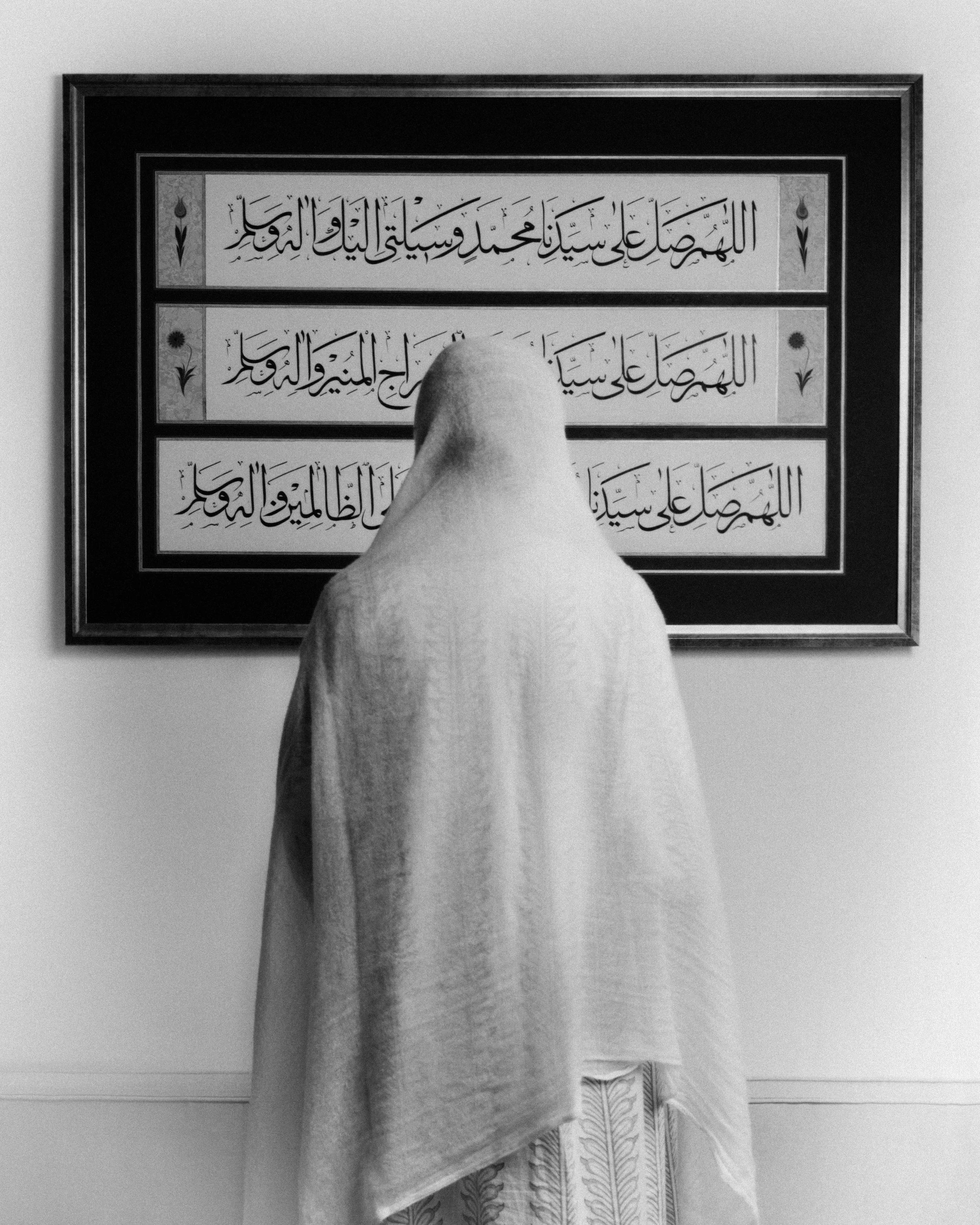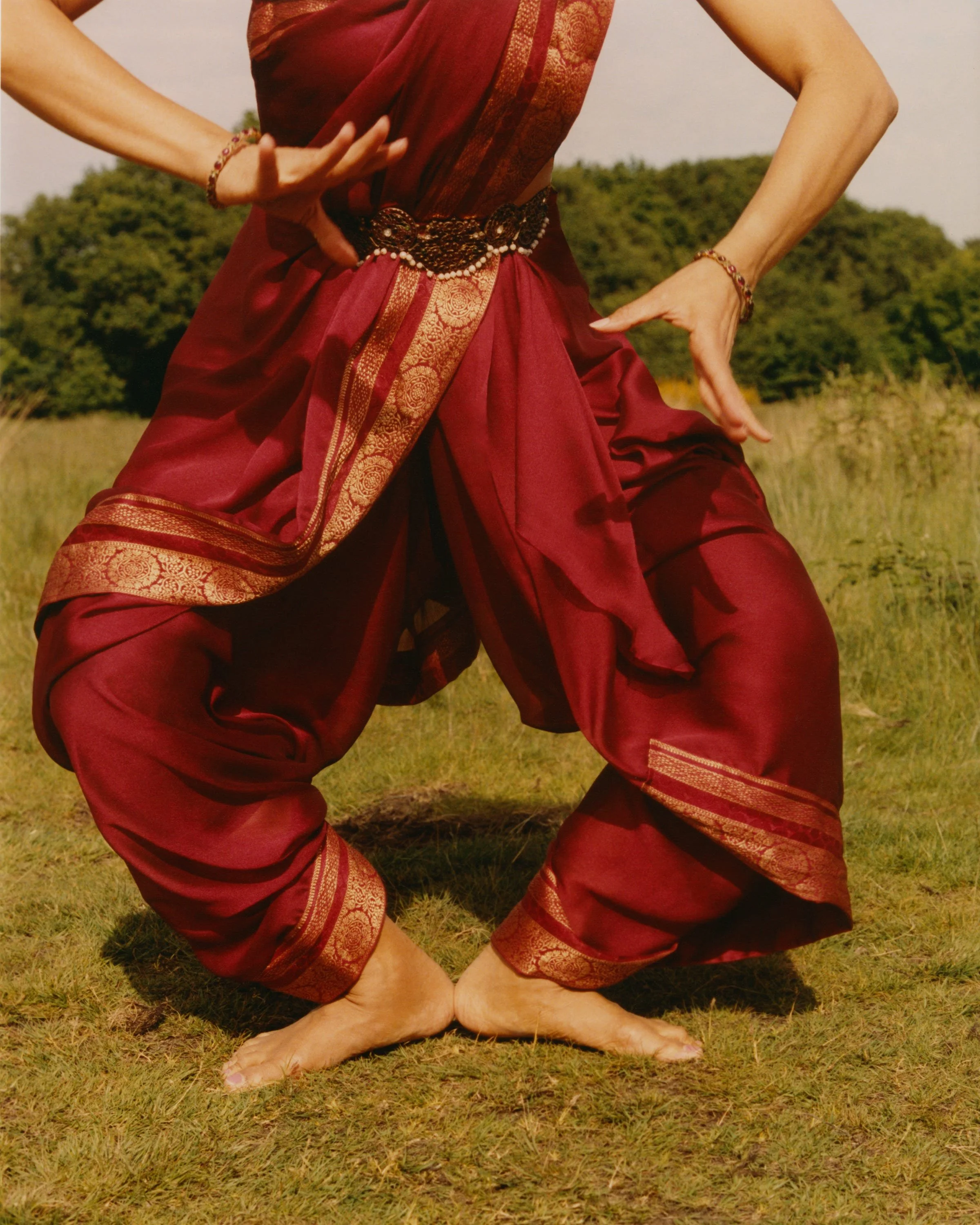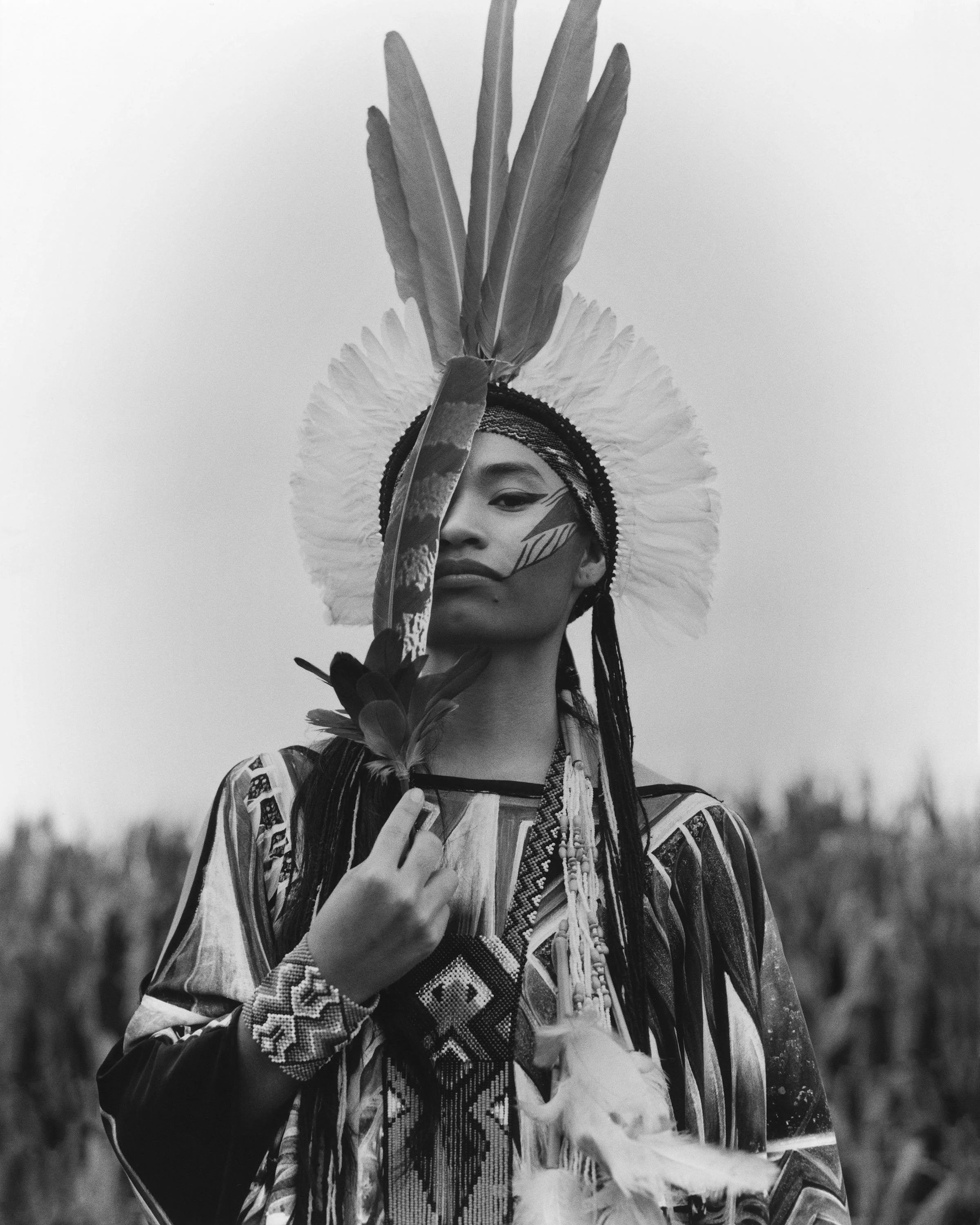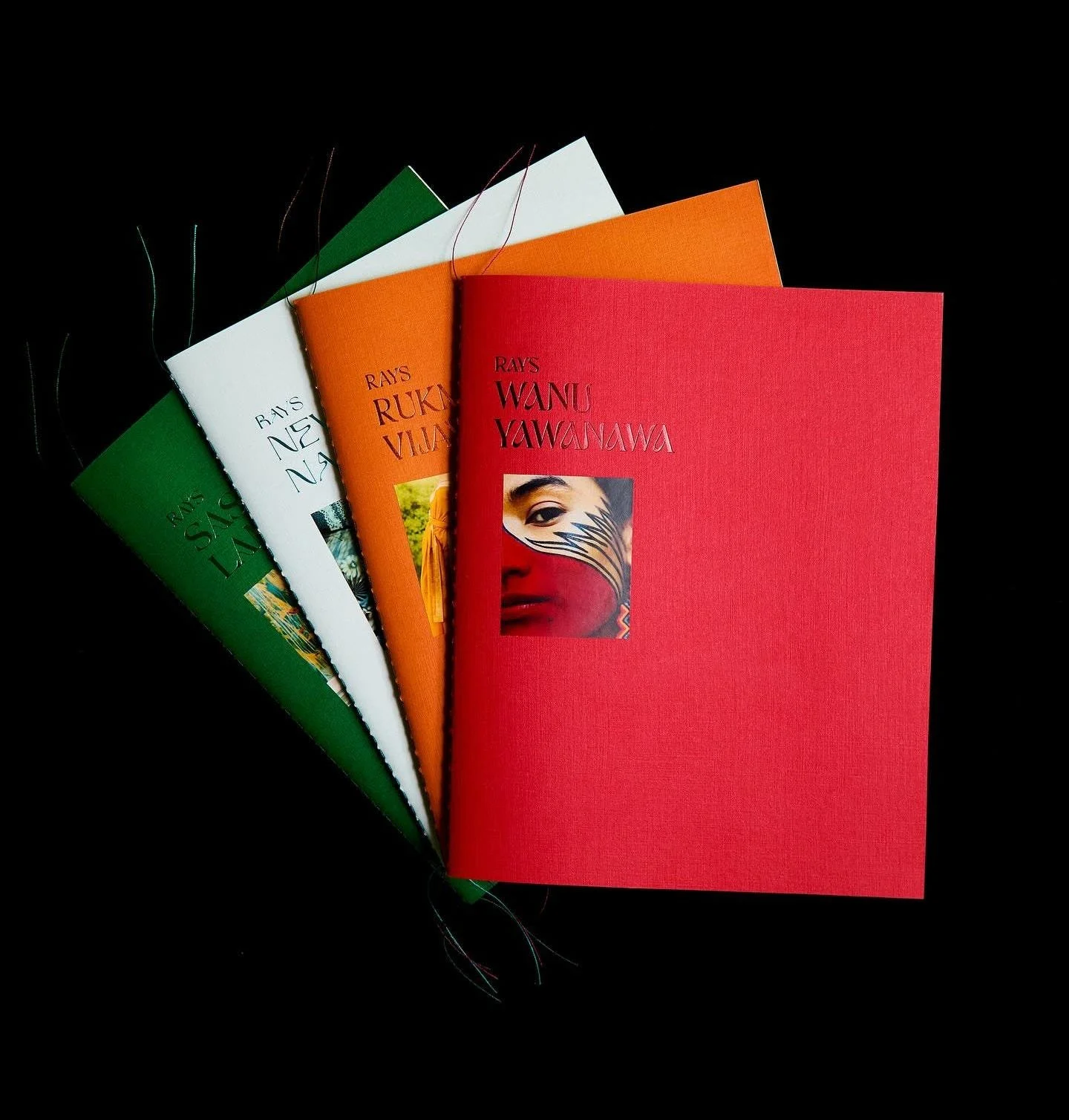Beyond the Image: Suleika Mueller on Photography as a Spiritual Practice
On a rare sunny morning in the London winter, I sat for a long time at Woodberry Wetlands, looking at the way the light hit the water. Two coffees in after a busy week, I had walked half an hour towards the reservoir in an attempt to somehow reconnect with nature without leaving the city. Laptop in hand as I got ready for my call with Suleika Mueller, my gaze settled on the shifting light over the reservoir. I let my thoughts drift—reflecting on my life in this city, my creative practice, and, less typically, my connection to spirituality.
I had spent the previous days researching Suleika Mueller’s work, diving into the ins and outs of her photography zine series, RAYS, ahead of the launch of its fourth edition, Wanu Yawanawa – The Indigenous Singer. Raised within a Sudanese Sufi Muslim order while attending school in Switzerland, Suleika’s life has been a continuous negotiation of cultures, traditions, and geographies. Now based in London, her work offers intimate portrayals of women-identifying artists and serves as an exploration of the connections between spiritual practice and creative expression.
From her light-filled apartment, she spoke to me about the spontaneous beginning of the project, her evolving relationship with faith, and the delicate balance of interpreting and honouring the experiences of those she photographs.
© Suleika Mueller
What inspired you to create RAYS?
I didn't plan for them. The whole project kind of started when I met Nevine Nasser, the Sufi architect.
I'm from Switzerland and I was born and raised in a Sufi Muslim order. Growing up in a spiritual community is a really beautiful thing, but going to school in the West meant all the values of the people around me in school were opposed to the tradition I was raised in within my spiritual community. I felt in between two worlds.
In Sufi Islam, you have additional practices on top of the Islamic prayers and everything else that Muslims do; we use chanting and dance as a way to reach transcendental states.
Within my particular tradition, as women, we weren't allowed to participate, and I always felt a little bit stifled by that.It was a really special thing to witness and it felt really powerful but I was close to it without being allowed to do it myself.
Being raised like that made art always inevitably interlinked to spiritual practice for me. My first experiences of music and dance were in the context of spiritual practice, and I could never not see that link. I think I gravitated towards art as a different way of experiencing a higher state of consciousness, of feeling closer to God.
In my teens, I didn't know exactly what I wanted to do, but I knew it was going to be something visual. I'm sensitive to visual input so certain colours and light have quite a profound effect on me. I'm just trying to put that into images and hope they resonate with people and have similar effects on them. I feel like it allows for potential transformative effects. At least that's the attempt.
When I moved to London in 2014, I kind of left my community. It was a completely different world. I tried to build something for myself and forge a path in this confusing industry that I didn't know anything about. I started to question my faith, and I was really influenced by the people around me as it felt like nobody practiced or believed in anything. After a couple of years, I felt like something was inherently missing within me. I went back to being interested in spiritual practice, and not necessarily only in the ways I had known it before.
One thing led to another and I found out that there was a Sufi center opening in Bethnal Green. I was really curious so I knocked on the door. The space was from a very different tradition to the one that I was raised in as Sufism is an umbrella term for many different communities. I was aware of it but I really fell in love with the space itself. As you can see in the images, it's made up of sacred geometry and it has a neutral colour scheme which is really transformed by the way the light comes in. So I asked, who made that? Who's the architect? And they told me about Nevine and I just could not… It sounds really silly, but I couldn't believe it was a woman. I guess with my own set of conditioning and experiences growing up, I always felt a little bit inferior, especially within the context of Sufi orders.
I reached out to her and asked if I could take her photos in the space. On the day, it was just the two of us and it was a magical experience. It was one of the most intimate shoots I've done, and we were getting to know each other as we were taking the photos and a really beautiful friendship kind of grew out of it. It felt really natural. Although we come from different traditions, there was a lot of mutual understanding. I took these photos because I feel like if I had known her or known about her when I was younger, it would have really had an effect on me. I wanted to highlight this woman because I know for at least one person she is a role model, and can really empower someone growing up who might feel a bit stifled.
At the same time, it’s beautiful to give people a small window into a hidden tradition through this project. It was about opening up something that I have been hiding from a lot of people just because I felt like nobody really understood what we were doing and what the practice was about.
I ended up interviewing Nevine as well because it was important for me that the person that I am photographing is given a platform to share their wisdom. Even on a personal level, it was quite transformative.
I am curious about your choice to name each edition after the artists you’ve photographed. How did you decide to focus each issue on a specific person? What drew you to them? Which common threads can you identify between them?
One thing to know about Sufism is there are hundreds of communities around the world with different leading figures that have come up with their own practices. For instance, in Nevine’s spiritual community, they don't dance, they only have silent meditation.
Growing up, I was in Sudan once a year for the main celebration. During the celebration, all the other Sufi orders from Khartoum come and pay their respects. I've always been very aware of different approaches within Sufism, so for me, it has always been quite obvious that there are different attempts to reach the same goal. At the same time, I was raised with this very dogmatic belief that this is the only way and that never really felt true in my body. I feel like it's something that I keep on coming back to… unity expressed through diversity.
A couple months after I finished the project with Nevine, Aartthie Mahakuperan—the stylist of the shoot—reached out to me and told me an idol of hers, Rukmini Vijayakumar, was coming to London. I went online and I saw that Rukmini had just published an autobiography where she talks about this dance practice being her spiritual practice itself, and it really resonated with me. As I had just finished the interview with Nevine, this topic of arts and spirituality was very much on the top of my mind still. When I finished that shoot, I thought, oh my God, maybe I'm supposed to continue doing this. Maybe it doesn't just have to end with Nevine. Maybe I'll just see what comes next.
© Suleika Mueller
I would love to hear more about the process of shooting someone you don't previously know, as it can be complex to accurately portray a person’s subjectivity in an intimate but respectful way. Can you share how you go about choosing the setting and focus of each piece? How do you collaborate with each person so you can accurately represent their individuality in the ways they are portrayed?
This most recent one with Wanu Yawanawa was the project that took the most time as it was unfamiliar territory for me. On top of that, she doesn't speak English. I was quite lucky as I was invited by someone who speaks both English and Portuguese and she translated between us. We were staying in the same house so luckily I had a lot of days with her. I think it's all about staying open and of course, being respectful, but mostly it's about asking questions, and making sure I understood what her tradition is about, what are the main aims of certain rituals.
At the same time, and of course that's just my experience, but there was so much familiarity still in what she told me and what she expressed, especially because she's a singer, and I come from a chanting tradition.
© Suleika Mueller
This completely deviates from what we were talking about, but I was thinking back to you sharing your experiences in Switzerland and Sudan and I was thinking, how did you end up in London? What brought you here?
It's a good question. Honestly, there are different layers to it. I wanted to go to a big city in Europe where I could speak the language and have a creative career. When I was a teenager, I just wanted to go somewhere where I didn't know anyone. It was important for me to start fresh because I felt trapped as I grew up in a really large community where everyone knows each other. I raised other people's children and other people raised me. It's a very loving community, but I felt like I couldn't explore myself fully or allow myself to unfold naturally because there were a lot of expectations from other people. I just felt like it wasn't my path and I didn't a hundred percent fully fit in, you know?
I relate to that. I feel like a lot of people in the city came here for similar reasons.
I think so too, actually, because once I was here, I met quite a few other people like that.
Yeah, everyone's just trying to figure it out. On that note, where do you plan on taking this project?
There's much more to explore, so many different art forms and traditions. With RAYS in particular, I've realized planning does not work. I just need to let myself be guided on this. Usually that's not the approach to my work, but that's how the project came about and that's how it continued. There were times when I did in depth research trying to find another person, but it just didn't happen so I decided to see where it leads me. I'm used to working in a very planned out way and, you know, that's a very Western thing as well. It’s a practice for me to take a step back and let the project unfold how it wants to.
© Suleika Mueller
That's very interesting because looking at your background, you've done quite a lot of projects with brands and publications and those kinds of projects require a lot of structure. I’ve been having a lot of conversations with my friends recently about balancing our creative practices with other parts of our lives and figuring out how to make our projects sustainable. What are your thoughts on that? How do you strike the balance between different projects?
Oh God, It's a tough one. I'm learning. I freelance, I don't juggle a full-time job. It would be different if that was the case. It sounds wacky, but I'm just trying to learn to trust a bit more and not be as swayed as I used to be by the ups and downs of being a freelancer and putting in a lot of work with nothing panning out. Last year I was doing a lot of research, it wasn't leading anywhere, and then I just gave up, and then within an instant this project with Wanu came about so I guess it's about staying flexible. I try to stay open and responsive to what comes my way because I can definitely be a bit of a control freak but I feel like my life is trying to teach me to let that go because ultimately I was never in control.
Jamie Reid, an art director who works a lot with print and has done many books, helped me come up with the zine concept. It's all about keeping it coherent whilst making it unique to each person and that's a really tough balance to keep in a way because they are all different, right? So we kind of came up with this idea to have the same layout and follow a similar structure but to have a different colour and font for each person. He gave me the idea of the loose threads which I really love because it reminds me of sacred texts in a very subtle way.
© Suleika Mueller









